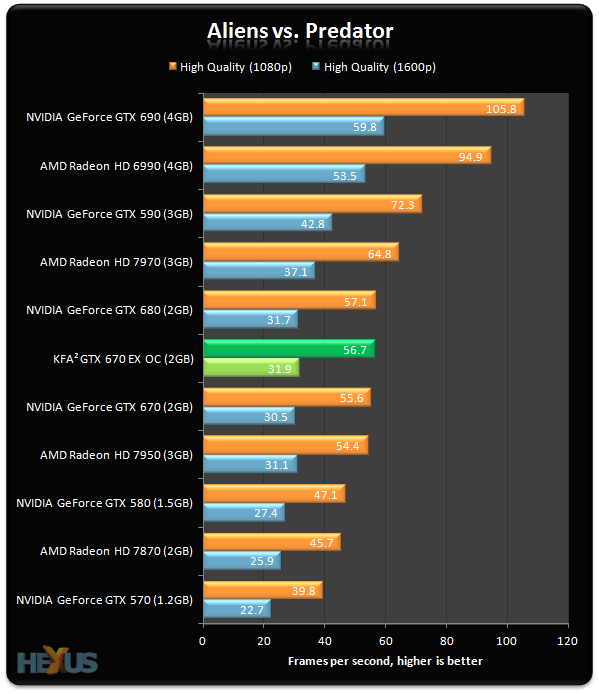Benchmarks - Aliens vs. Predator
 |
Review: HEXUS.net/qawcl | Where2buy: amazon.co.uk |
The standalone Aliens vs. Predator benchmark uses DX11 features such as hardware tessellation and advanced shadow sampling to draw and animate everyone's favourite xenomorph.

We're seeing nigh-on identical performance from the KFA² and regular GTX 680. This really shouldn't be so, as the GTX 670 loses one of the GTX 680's SMX units. This card should benchmark at least five per cent slower, perhaps even 10 per cent.
The answer to why performance is so handsome rests squarely with the GPU Boost function. We can log the exact GPU frequency on a per-second basis. Doing so shows our GTX 680 to run at an average GPU speed (GPU Boosted) of 1,097MHz in this title. The KFA², meanwhile, boosts to 1,189MHz, or over 90MHz higher, even though the two cards' GPU Boost is supposed to be similar.
Point here is that GTX 670 is actually running significantly faster than the average GPU Boost frequency mandated by NVIDIA - 1,189MHz (actual) vs. 1,085MHz (NVIDIA-specified) for this card - whereas the GTX 680 is closer to specification - 1,097MHz vs. 1,058MHz. It is this extra, behind-the-scenes boost that gives the GTX 670 greater-than-expected performance. KFA² benefits as a result.









